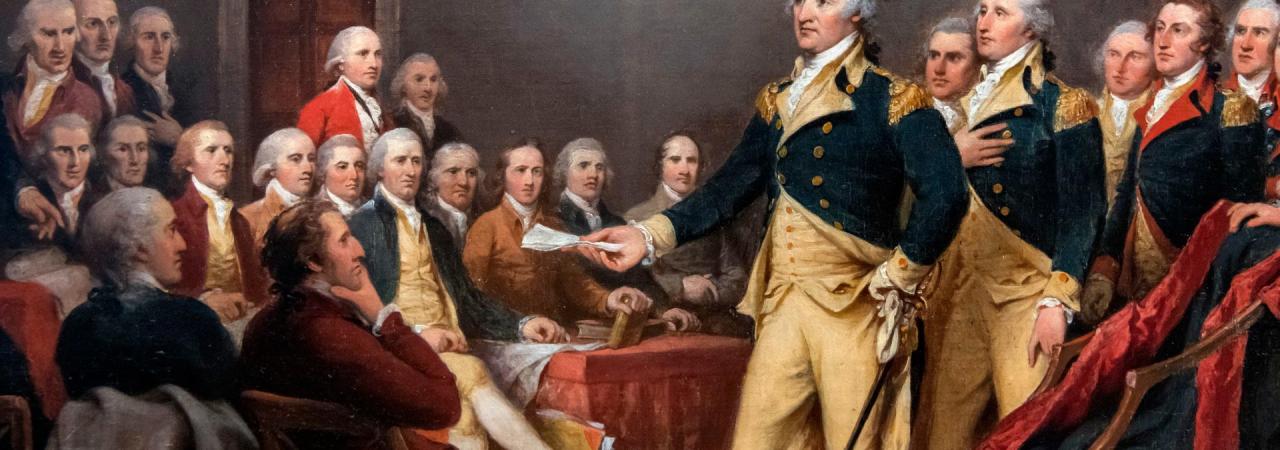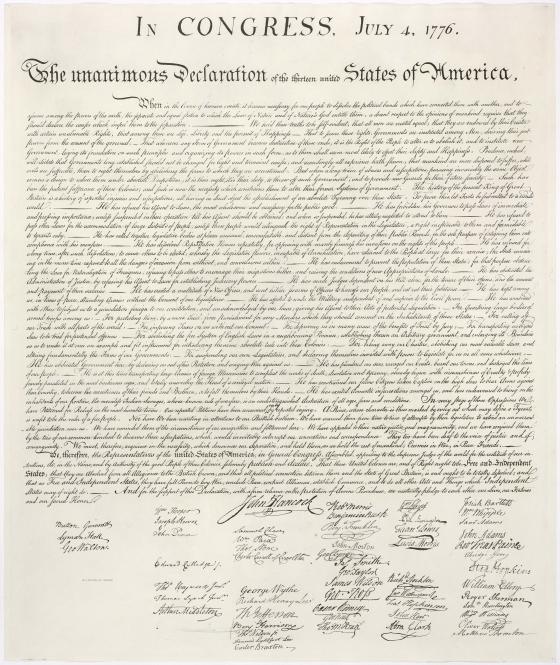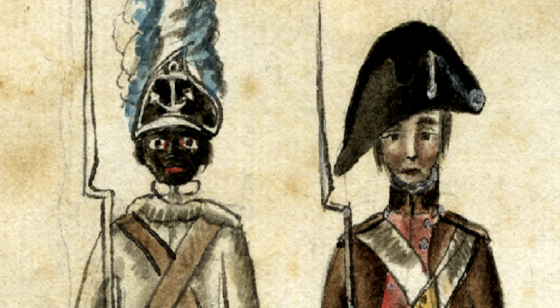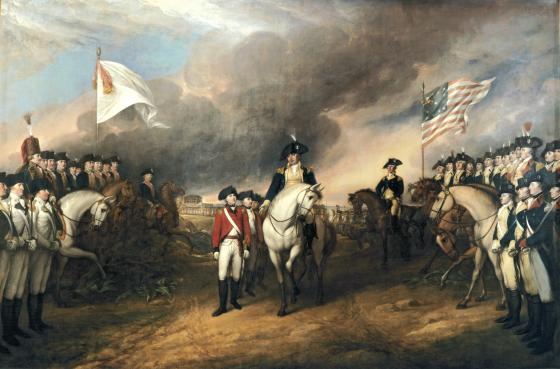
When talking with young people—children, grandchildren, nieces and nephews, or students—about the Revolutionary War, there may be great questions! Some questions are historically complex and can be explored in greater depth. Here’s a quick guide, anticipating some of the most asked questions when visiting Revolutionary War sites with young people. You can always explore American Battlefield Trust’s website for additional free resources to learn more about these topics and inspire your young historians! View Answers to Questions Kids Ask about the Civil War
When was the Revolutionary War fought?
The conflict began with fighting at Lexington and Concord in Massachusetts in 1775 and formally ended with the Treaty of Paris in 1783. The Siege of Yorktown in 1781 was the last large-scale fighting during the war.
Why were they fighting?
The Continental (American) Armies were fighting for independence from Great Britain and to establish a new nation, the United States. The British Armies fought to try to keep the American colonies in the British Empire.
Hessian soldiers were hired to fight alongside British soldiers as mercenaries. French soldiers fought alongside the Americans as allies after 1778. Spain also allied with France and the United States, and Spanish governors and soldiers participated in their territories, opposing the British.
What is the Declaration of Independence?
The Declaration of Independence is one of the founding and most fundamental documents of the United States. On July 4, 1776, during the American Revolution, the Second Continental Congress adopted the famed document drafted by Thomas Jefferson that pronounced the independence of the thirteen states, previously the Thirteen Colonies. The Declaration was adopted at a point in time when Congress had determined that their grievances against Great Britain were irreconcilable and the majority in Congress agreed that independence was the best solution.

Who were the Tories?
Called a variety of different names—like Tories, Royalists, Loyalists, or King’s Men—these people lived in America and supported the British cause during the Revolutionary War. They favored remaining part of the British Empire and working with the British King and Parliament to resolve political differences, instead of declaring and fighting for independence. It has been estimated that about one-third of the population in the 13 Colonies/States were Loyalists, one-third actively supporting independence, and one-third trying to avoid the conflict.
How far did cannons shoot?
Revolutionary War armies used different types of cannons: standard cannons (field guns), mortars and howitzers. The field guns could fire between 1,000 to 2,000 yards while smaller howitzers had a range of 750 yards to 1,300 yards. Field guns could fire two forms of ammunition. Roundshot, or cannonballs, were large pieces of iron or lead at infantry or fortifications. Canister or grapeshot was also fired at infantry, but involved firing a number of smaller balls that would spread outwards in a cone like a giant shotgun, a devastating weapon at close range. Mortars and howitzers fired at a much higher angle, meaning that they usually had shorter range than a cannon, but could shoot over the heads of friendly troops.
How far did muskets shoot?
During the Revolutionary War, flintlock muskets could fire relatively accurately up to 100 yards. The muskets weighed about 10-12 pounds and fired a lead ball that weighed about one ounce. A well-drilled soldier could load and fire his musket about 3 times per minute. Some soldiers carried rifles that were heavily but could fire much further—up to 300 yards.
How did the armies get here?
British soldiers crossed the Atlantic Ocean on wooden sailing ships to arrive in the rebellious colonies. American soldiers had a shorter journey, usually enlisting in their local community and then marching to join the larger American armies. During campaigns, soldiers marched long distances, moving from place to place. Some soldiers, and most officers or cavalrymen, rode horses.
How did they fight on battlefields?
During the Revolutionary War, there were different types of fighting. On open battlefields, troops assembled in lines of battle. Since the muskets did not have a long firing range, the lines of soldiers marched close to each other and fired volleys at each other. Sometimes soldiers charged the enemy with bayonets. During some campaigns and battles, American soldiers—usually militiamen or frontiersmen—used the woods and terrain to ambush and follow marching columns of British soldiers.
Why did they fight here?
Battles usually happen at or near strategic locations. During the Revolutionary War, battles were fought near important cities, forts, crossroads, or along roads that an army was following during a march.
How did a battle end and what determined the winner?
Battles typically ended when one of the armies involved retreated from the field due to loss of men (casualties) and supplies. The winner of the battle was usually determined by who held the battlefield or position of importance at the end of the fighting.
What is a regiment?
A regiment is an organized unit of soldiers. During the Revolutionary War, the number of men in a regiment could vary widely, usually a few hundred to 1,000 soldiers. Companies of soldiers formed the regiment, and in European regiments, some companies had specialized roles like grenadiers.
Did African Americans and Latinos fight in the Revolutionary War?
African Americans served in both British and American armies. Some British generals offered freedom to enslaved men if they joined the British ranks. The American regiments were not segregated during the Revolutionary War, and Black soldiers formed nearly 10% of the Continental Army. After Spain joined the war as an ally of France and the United States, Spanish and Hispanic people in territories along the Gulf of Mexico fought and provided important information to the American cause of independence, too. Learn more!

Did Native Americans fight in the Revolutionary War?
Native American tribes fought alongside both American and British armies during the Revolutionary War. Treaties, promises, and tribal alliances usually influenced which side the warriors chose to support. Learn more!
Did women participate in the Revolutionary War?
Whether they were Loyalists or Patriots, women supported their side during the Revolutionary War. From traveling with the armies and providing cooking, washing, and medical care to supporting their cause from the homefront, women took active roles in the conflict. Women were not supposed to enlist and fight as soldiers, but at least one did, and other women stepped into combat roles out of battle necessity. Some women also collected information and passed the details into spy networks. Learn more!
What was medical care like?
Over the course of the Revolution, disease and infections were deadlier to soldiers than combat wounds. An estimated 6,800 American soldiers were killed and 6,100 were wounded. 17,000 deaths were caused by disease. The most common wound soldiers experienced during the American Revolution were caused by musket balls.
What happened to prisoners?
Prisoners of War during the Revolutionary War were part of a complicated situation. Since the British viewed the conflict as a rebellion, they did not officially follow the customs of prisoner exchange and treatment, particularly during the early years of the war. Some prisoner exchanges were arranged, but commanding officers managed these events and their terms—not acting officially as the British Crown or Continental Congress. The British held many of their prisoners on prison ships, where thousands of Americans died. British prisoners captured at Saratoga in 1777 were moved hundreds of miles over the next years and lodged in towns and barracks.
What was soldier life like?
Life in the Continental Army was difficult. It was mundane and monotonous. Generally, when not engaged in combat, soldiers in the Continental Army served three duties: fatigue or manual labor, such as digging vaults (latrines), clearing fields, or erecting fortifications. They also served on guard duty and drilled daily with their musket and in marching formations.
Do we have photographs from the war?
Photography did not exist during the Revolutionary War. However, there are paintings, sketches, and other forms of created art that show what people looked like and how events or places appeared.
How many people fought in the war/died in the war?
Great Britain had 8 million residents in 1775, and the 13 colonies about 2.5 million (of which half a million were slaves). During the Revolutionary War, about 231,000 men served in the Continental Army, though never more than 48,000 at any one time, and never more than 13,000 at any one place. The total of men serving in Colonial militias was around 145,000 men. France also dispatched a substantial force to North America beginning in 1779, with more than 12,000 soldiers and a substantial fleet joining the Colonial Americans by wars end. At its peak, the British Army had upwards of 22,000 men at its disposal in North America to combat the rebellion. An additional 25,000 Loyalists, faithful to Great Britain, participated in the conflict as well. Nearly 30,000 German auxiliaries, or Hessians, were hired out by German princes and served alongside the British for the duration of the war.
Throughout the course of the war, an estimated 6,800 Americans were killed in action, 6,100 wounded, and upwards of 20,000 were taken prisoner. Historians believe that at least an additional 17,000 deaths were the result of disease, including about 8,000–12,000 who died while prisoners of war. Unreliable imperial data places the total casualties for British regulars fighting in the Revolutionary War around 24,000 men.
Approximately 1,200 Hessian soldiers were killed, 6,354 died of disease, and another 5,500 deserted and settled in America afterward.
How did people follow the political and military news?
Newspapers, committees of correspondence, military reports, and personal letters kept people informed of the happenings during the war. Keeping states, leaders and common people informed of the political developments and military victories and defeats was an important part of uniting the colonies/states. News to and from Europe could be delayed by the Atlantic crossing, but communication was regular to the courts and people of Britain, France, and other European countries, too.

Why did the Americans win the war?
American victories at Saratoga (1777) and Yorktown (1781) forced the surrender of two large British armies and turning points for the British leaders to evaluate the war. The American alliance with France and Spain significantly contributed to the victory. The distance of the conflict from Britain and American familiarity with their own land and terrain also contributed to the victory.
How do historians know what happened?
Historians study the past mostly by using "primary sources," which are accounts of events written by people who witnessed them. These primary sources or documents might be letters, battle reports, maps, soldier records and newspaper accounts from the time. Historians evaluate and analyze these documents and try to form a complete picture of what happened.
Are Revolutionary War battlefields preserved?
While some of the larger battle sites and camp sites are preserved as either national or state parks, a surprising number are not, or are only partially preserved. There is still great potential to save key areas at many engagement sites! Battles were fought on people's private property or open land during the Revolutionary War. The battlefields did not automatically become protected parks. Over the years, many Revolutionary War battlefields have been privately owned and structures or developments have been built. To preserve this battlefield land, it can be purchased from its private owners if they are willing to sell and then modern structures can be removed to help restore the land to its Revolutionary War appearance. Learn more!
Get Involved: Generations
Related Battles
93
300
450
1,054
515
19
5
905
330
1,135
181
260
5,506
258
90
1,018
149
868
389
8,589

